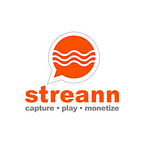First OTT, then video
Part I: What is “watching TV” in 2021?
The meaning of “watching TV” has changed dramatically over the past few years. While our watching pattern was traditionally controlled by show timings, now users expect 100% control of the viewing experience. This means that they can watch instantly, anytime, on any compatible device connected to the Internet. Also, they can set your watching pattern by pausing, fast-forwarding, and rewinding.
This is how to create OTT-first media apps!
High compatibility with multiple devices
Today, users have lots of devices. When watching content, users continually swap from device to device in different situations. So, it is important to ensure that your design is compatible with a broad range of devices. This will help users to enjoy OTT content whenever they want, from the living room in a large TV set to the couch on an iPad, and on-the-go in their mobile phones.
Seamless onboarding experience
To watch TV channels, turning on the TV is all you needed to do. But to watch OTT content, an onboarding experience is required for new users. The onboarding process should be very simple and easy to entice users to continue paying for their membership.
Being straightforward is one of the effective onboarding strategies. Netflix does this very well, as you can see in the home page “Watch anywhere. Cancel anytime.”
Multiple profiles and screens for a single account
Many of us might have experienced fighting over a TV remote control, arguing about which show we want to watch next. We used to compete for a limited resource, one TV screen. But OTT media apps have finally ended these TV remote control battles in households.
OTT media apps like Netflix and Disney+ allow different devices and user profiles on one account. This means each member can access their content via their individualized interfaces. You might expect your OTT media apps to reflect your taste, not your child’s. By allowing multiple profiles and screens per account, users can keep their watching patterns and increase engagement.
Navigation: How to make a large catalog of contents navigable
Content only has meaning when it can be found. Today, we can enjoy massive content on OTT media apps, but this makes it more and more difficult for users to find what they want to watch.
To enhance this navigation experience, the following UI/UX considerations should be aware of when designing OTT media apps.
Clear navigation menu
A clear navigation menu helps users find TV shows or films to enjoy. It is commonly displayed as a navigation bar or a hamburger menu, but not limited to them.
Many OTT media apps use a horizontal global navigation bar at the top. This navigation bar is often a list of content categories to help users browse through the categories.
Accessible search bar
If users don’t like what they see once they browse through or want to watch a specific film, they will go immediately to a search bar. So it’s important to make it visible. Its look and function should be designed in predictable ways like using a magnifying glass icon.
Also, users should be able to navigate regardless of where they are. So it’s good to put a search bar in the same place on every page. Instantly showing results as users type can also enhance user engagement. Rather than simply showing “no results”, displaying results as users type makes them keep exploring and navigating.
Interactive video preview
Previewing videos can be a good method to speed up the navigation process. This preview helps users to decide whether to click play or not. Netflix also uses this method to help users find content to enjoy. Upon hover, each thumbnail becomes expanded as a preview screen. By watching highlighted stories, users can make more confident decisions on their next selections.
Stay tuned for part II, coming next week!
Want to discuss the launch of a next-generation OTT app for your content? Learn more at www.Streann.com
